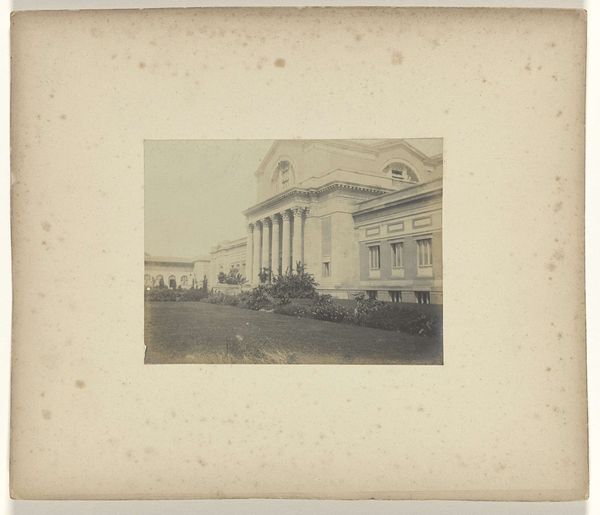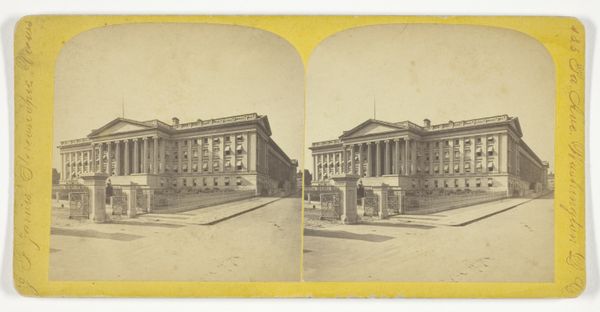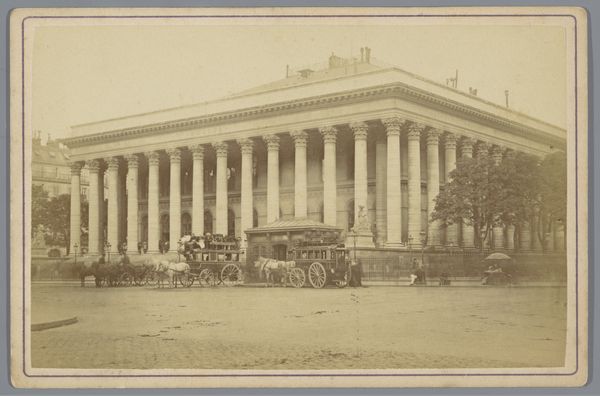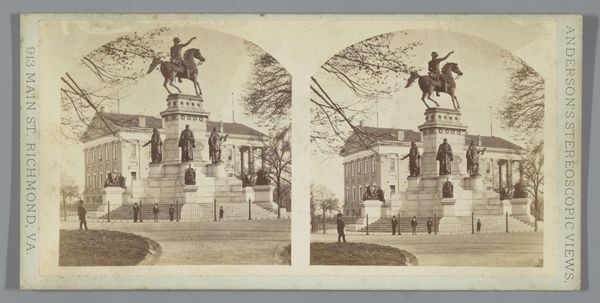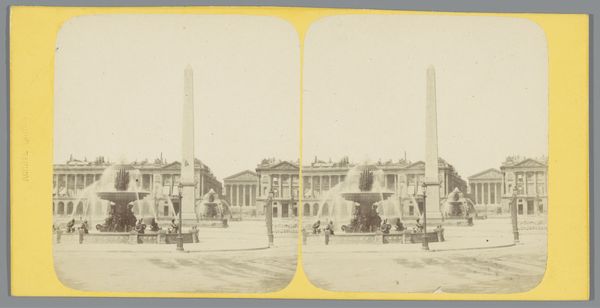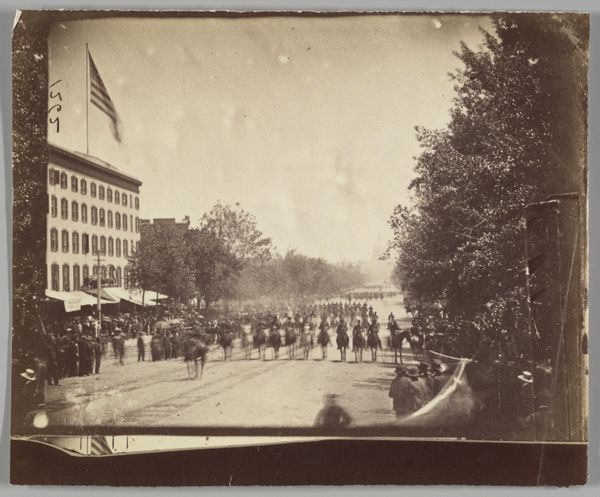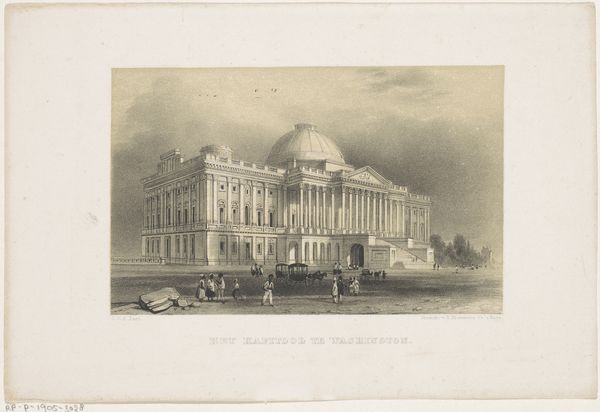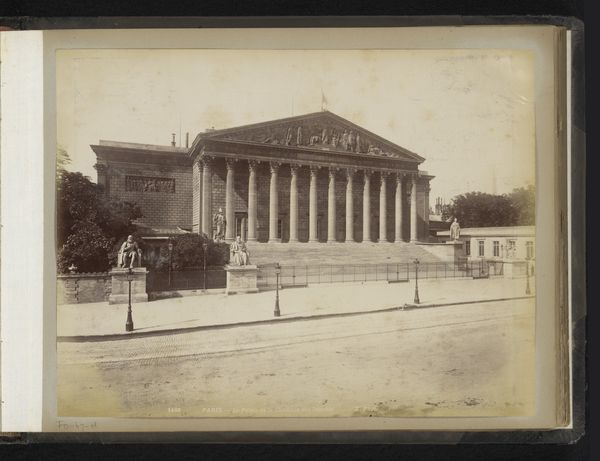
Festivall Hall op het terrein van de wereldtentoonstelling in St. Louis (Louisiana Purchase Exposition), 1904 1904
0:00
0:00
janschuller
Rijksmuseum
#
photo of handprinted image
#
aged paper
#
toned paper
#
light pencil work
#
pale palette
#
water colours
#
ink paper printed
#
watercolour bleed
#
watercolour illustration
#
watercolor
Dimensions: height 80 mm, width 106 mm
Copyright: Rijks Museum: Open Domain
Curator: This is "Festival Hall on the grounds of the World Exhibition in St. Louis (Louisiana Purchase Exposition), 1904" from the Rijksmuseum. It's dated 1904. Editor: My initial impression is one of faded grandeur. It feels like a memory, softened by time and the sepia tones of an aged print. Curator: The Louisiana Purchase Exposition was meant to showcase progress, but progress for whom? We need to question the underlying narratives of colonialism and imperialism that this fair celebrated, acknowledging that the “progress” came at the expense of Indigenous populations and other marginalized groups. The image aesthetic also romanticizes this "progress", hiding it with a sort of patina. Editor: I am struck by the material conditions of its production and circulation. Ink printed on what appears to be toned paper, now further aged and stained. What labor was involved in producing this image and what was its intended use? Was it a mass produced postcard, or a limited edition print? Who consumed it and how? These elements matter. Curator: Absolutely. The accessibility and reproduction of these images is tied directly to the rise of mass media and its impact on public perception. This particular image aesthetic of toned and aged paper adds to the nostalgic gaze that can obscure the exploitative labor practices of that time. Editor: Consider the buildings, they are magnificent structures created through the exploitation of material resources and human labor. Think of the iron ore mined, the trees felled, the bricks baked – and the hands that toiled to bring these materials together, often under oppressive conditions. It calls into question the idea of architectural marvel and instead demands an examination of its means of production and labor. Curator: By decentering the dominant narrative, we are pushing towards a more intersectional and equitable understanding of art and history. The image serves as a reminder of how power structures become solidified in visual culture and what historical narratives get perpetuated as a result. Editor: And a challenge for us, today, to critically examine the processes of production and the stories we choose to tell about our material world. Curator: A sobering snapshot. Hopefully one that encourages more discourse in its wake.
Comments
No comments
Be the first to comment and join the conversation on the ultimate creative platform.

